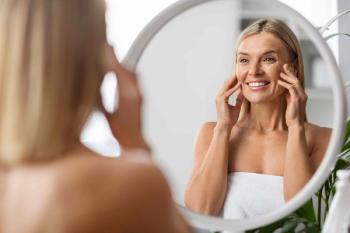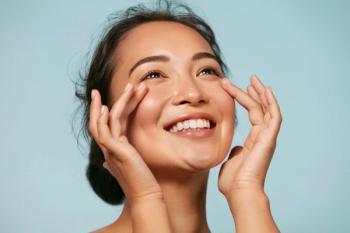
- Nutritional Outlook Vol. 23 No. 5
- Volume 23
- Issue 5
Skincare science and the microbiome
Clinical studies associate skin conditions ranging from accelerated aging and skin sensitivity to atopic dermatitis and even dandruff with some level of microbial “dysbiosis.”
The human microbiome-that vast collection of bacteria, fungi, and viruses occupying the human body-comprises trillions of microorganisms, outnumbering our own cells by 10 to one,
Not long ago, the logical response to such a foreign presence would have been obliteration: Scrub the gunk away. But the more we learn about our skin’s microbiome, the more friend than foe these organisms appear to be.
This isn’t news to Paul Schulick, cofounder of For The Biome (Dummerston, VT), a skincare company that views the microbiome as the route to healthy skin. “The general population is beginning to understand that the innate resilience of the skin lies in the skin-microbiome relationship,” he says. “As more consumers become educated on the skin-microbiome relationship, they’ll naturally want to do a better job nourishing and protecting their skin’s microbial environment.”
On the Surface
With the value of the
“Awareness of the skin’s microbiome is still in its infancy,” Schulick says, “but it’s being helped by the fairly well-established understanding of the gut microbiome. The concept of taking probiotics for a healthy gut is now shifting to, ‘Okay, how do we do this for skin?’”
The conversation is already playing out on social media, notes Cécile Kalem, global marketing, active ingredients, BASF Beauty Creations (Pulnoy, France). “Consumers are fully aware of the value of preserving their skin microbiome,” she says, and a recent BASF analysis found females aged 13 to 24 leading the discussion on Instagram, in particular.
Hot topics include dry and sensitive skin, from redness and rashes to eczema and psoriasis; aging concerns like wrinkles, expression lines, and crow’s feet; and the consequences of oily skin: blackheads, pimples, scars, and their respective treatments.
Savvy brands are listening. As such, says Paula Simpson, beauty market expert and founder of
Frontline Defense
The reason is elementary. The skin is the body’s largest organ-its frontline barrier against the elements, infection, toxins, and the loss of water and nutrients.
At the very front of that frontline is what’s known as the visual stratum corneum, which is the uppermost, nonliving layer of the epidermis and “also the most active site where the skin microbiome resides,” Simpson explains.
“The microfloral component of the skin’s barrier is in constant contact with our environment, and works collectively to protect against invading pathogens, to influence or alter the immune response, to provide a source of nourishment to skin cells, and to break down natural metabolites on the skin.”
Our Microbiomes, Ourselves
This symbiosis between our microflora, our environment, and ourselves is consistent with “hologenome theory,”1 which Schulick describes as “an acknowledgment that the whole, or ‘holo,’ of our microbial and human DNA, or ‘genome,’ is a collective community: a ‘hologenome.’”
The upshot: We don’t evolve alone. “Our microbiome acts as our copilot in this process and, in many ways, is as much a part of us as our human cells,” he says. “We’re part of a vast, interdependent network of nature’s kingdoms and the environment-all connecting, communicating, competing, and cooperating with each other for resources, survival, longevity, and legacy.”
In the Balance
That’s an intense relationship, and one that our modern world too often upsets-with the consequences plain to see.
Clinical studies associate skin conditions ranging from accelerated aging and skin sensitivity to atopic dermatitis and even dandruff with some level of what Simpson calls microbial “dysbiosis.” That could mean an over- or under-population of the bacterial genera or subspecies normally present on healthy skin, or a flourishing of transient or pathogenic bacteria that perturb otherwise balanced skin microflora.
For example, evidence hints that eczema could reflect a depleted skin microbiome, Schulick notes, “which, in turn, affects the skin’s ability to retain hydration, while increasing reactivity.” Meanwhile, acne may signal a diet- or stressed-induced imbalance of what he calls “commensal” bacterial strains. “The point,” he says, “is that all of this is connected: the skin, the microbiome, and the way we live our lives.”
Thus, he views such conditions less as “problems” than as messages from our skin. “What’s interesting,” he says, “is that when someone’s experiencing chronic stress, eating a nutrient-deficient diet, or struggling with mental health, they most likely have an unbalanced microbiome.”
Down and Dirty
Another habit wreaking havoc on a healthy skin microbiome is “our societal obsession with cleanliness and lack of awareness as to what harsh skincare ingredients do to our microbiome’s health,” Schulick continues. “Our microbiomes are part of us, yet we constantly stress and strip them.”
Simpson agrees: “Part of the problem is over-cleansing, over-treating, and using too many products that congest, strip, or break down a healthy, balanced skin microbiome.” Yes, exfoliation and peels decongest and reveal new skin cells, but they also eradicate the oils and microbes that moisturize, balance, and guard against skin damage.
So, a case of dermal dryness may not be a call to moisturize. “The issue,” Schulick says, “could be the trans-epidermal water loss that can occur in skin whose microbiome is continuously stressed or wiped out with harsh products.”
What to do? “Repopulating a rich and biodiverse microbiome is a great place to start,” he suggests, “and typically shows rewarding cosmetic results while helping skin adapt gracefully as it ages. Giving the skin a ‘breather’ allows the microbiome to recalibrate and flourish. Eliminating harsh ingredients is one of the best things to do for microbiome health, and one of the easiest to enact.” Formulators: take note.
From Science to Skincare
“We know that certain ingredients disrupt the skin’s natural processes,” Schulick continues. “So, the obvious approach is to exclude these ingredients from product formulations and focus on the nutrients that feed the skin’s microbiome.”
Prime among those are probiotics. “As science and research advance,” Simpson says, “skincare and nutraceutical formulations will become more specialized and targeted. Clinical studies already correlate and target specific bacterial genera, subspecies, and strains to specific skin-health conditions, and integrated approaches via nutrition, supplementation, and skincare will continue to evolve.”
She’s particularly bullish on the nutrition arm, as evidence suggests that probiotics’ effects on skin-to say nothing of systemic health-“are superior through diet and supplementation over topical skincare alone,” she says.
In the gut, for example, “probiotics influence skin through the immune system, regulating inflammation and supporting the skin’s metabolism and barrier function to promote a balanced skin microbiome,” she explains. “Probiotics also detoxify and rid the body of pathogens or bad bacteria in the gut before they’re absorbed into the bloodstream. This communicative process between the gut and skin depends upon the trillions of microbes in the gut that trigger immune-communicative receptors that then influence skin-the gut-skin axis.”
That said, a role for topical application remains. “Applied topically, probiotics can complement nutrition by helping rebalance the skin’s ecosystem while controlling or destroying harmful bacteria that aggravate the skin,” she says. “They calm and nourish skin cells, and encourage water retention and skin moisture by strengthening the skin barrier-the primary active site of the skin microbiome-and provide extra support and protection against environmental and chemical pollutants and the harmful pathogens we expose or apply to our skin each day.”
Adds Shaheen Majeed, president worldwide, Sabinsa (East Windsor, NJ), “Because products in topical format are comparably less complex to develop and face less rigorous regulations, they can be developed more quickly than most other delivery systems.” Another advantage: most skincare formulations are applied topically-so they have the familiarity factor-and “yield results rapidly since they’re used directly at the affected site.”
In both topical and ingested formats, the species, subspecies, or strain makes or breaks the product. Unfortunately, current topicals usually mount what Schulick calls “a spray-and-pray approach: spraying yourself or ingesting strains that may not be compatible with your skin or gut’s commensal bacteria. You don’t know for sure which strains will take root or if they’ll encourage a healthy microbiome.”
The lesson, says Simpson, is that “not all probiotics are created equal. It’s imperative to use the correct bacterium according to the mechanism of action on the skin. For example, S. thermophilus has been found to promote skin hydration and ceramide production; other strains may help calm inflamed or blemished skin. To be effective, a product must provide a formulation with appropriate, viable strains.”
Preposterous
Probiotics are hardly the only game in town for formulating microbiome-based skincare. As Schulick says, “We’re seeing that the most effective way to nourish the skin’s microbiome is with prebiotic and postbiotic nutrients.”
He describes the former as “like a fertilizer for your microbiome,” while the latter are “invaluable nutrients created during fermentation.” Fermenting whole ingredients with strains like L. reuteri, L. rhamnosus, and L. plantarum produces “remarkable results for the skin,” he notes, adding that the postbiotic nutrients they create “truly ignite communication between the skin and its microbiome, helping to nourish the connection between the skin and all its response systems.”
BASF’s Kalem notes that the cosmetic use of fermented postbiotic ingredients first took root in Asia but is expanding as options and awareness grow. For its part, BASF produces its Phytofirm Biotic ingredient by fermenting non-GMO, traceable European soybeans with a specific strain of L. plantarum.In vitro and in vivo tests show that the peptide- and lactic acid–rich extract increases production of the dermis’s key architectural proteins collagen and elastin, promoting a more youthful appearance, she says.
As for prebiotics, Sabrina Leoty-Okombi, R&D project leader at BASF Beauty Creations, notes, “Oligosaccharides are the first molecules we think about-both for the benefits of their film-forming action, which improves the skin barrier and maintains good hydration-and for their sensorial properties, which are interesting for formulas.”
Majeed notes that xylitol, rhamnose, fructooligosaccharides, and inulin “are the most widely used prebiotics for nourishing probiotics. Obviously, it’s important to choose a prebiotic that can enhance the growth of the specific microorganism of interest, so that only a selective microbiome is propagated.”
Prebiotics also promote scalp health. “Our researchers studied the specific microbiotic composition of an oily scalp versus a normal scalp and highlighted the existence of six bacterial species more abundant on a healthy scalp,” Kalem explains. The result is Scalposine, a BASF ingredient that she says rebalances the scalp’s unique microbiome. An internal clinical study showed that it acts prebiotically to allow the recolonization of oily scalps with the beneficial strains, with in vivo results showing increased scalp comfort and longer time to hair re-greasing between washes.
Rabbit Holes and Roads Ahead
So, what’s next for microbiome skincare? A mix of opportunities and challenges, say the experts.
“In other fields,” notes Aurélie Courtois, scientific communication at BASF, “living bacteria have proven their effectiveness in nutraceutical and pharmaceutical applications, but little data currently exists on the ingredients incorporated into cosmetic formulas. That’s now the most challenging goal of the cosmetics industry: the introduction of live bacteria into cosmetic formulations.”
Simpson is optimistic. “Higher grades of efficacy and formulations tailored to specific skin conditions will improve and expand as science and formulation stability evolve,” she believes.
Nevertheless, the science supporting microbiome-based skincare is complex stuff, not to mention “a shift from how we’ve normally cared for our skin,” she says. So, when it comes to consumer demand, “There’s still a lot of work to do.”
No wonder Schulick considers education “the biggest challenge. This concept requires an acceptance of the interconnectedness of whole-body and mental wellness and how this impacts the health of the microbiome and, in turn, the skin.”
It may be something of a “rabbit hole,” he says, “but it’s one that most will be glad they jumped into. I know I am, and it’s what continues driving my motivation to grow public awareness.”
References:
- Zilber-Rosenberg I. “Role of microorganisms in the evolution of animals and plants: the hologenome theory of evolution.” FEMS Microbiology Reviews, vol. 32, no. 5 (August 2008): 723-735
Articles in this issue
over 5 years ago
Antioxidants in 2020: Their next phase of growthover 5 years ago
The search for cleaner-energy ingredients continuesover 5 years ago
High anxiety: Will CBD ever be legal in foods and beverages?over 5 years ago
Making immune health claims in the time of COVID-19? Be careful.about 6 years ago
Does CBD work on the skin?Newsletter
From ingredient science to consumer trends, get the intel you need to stay competitive in the nutrition space—subscribe now to Nutritional Outlook.





